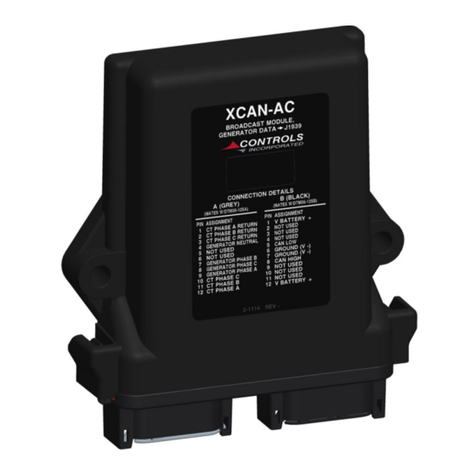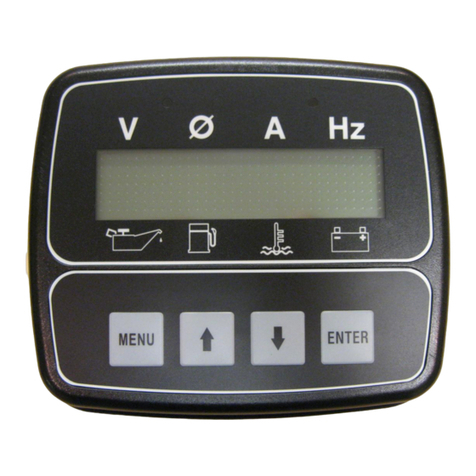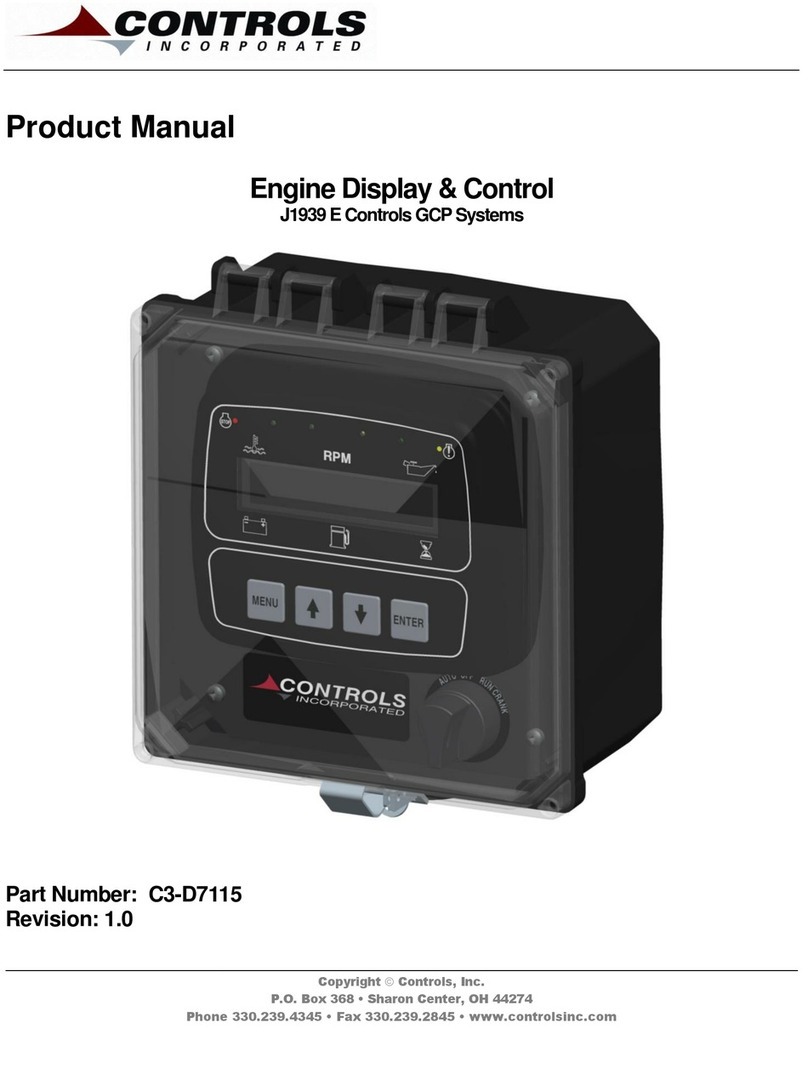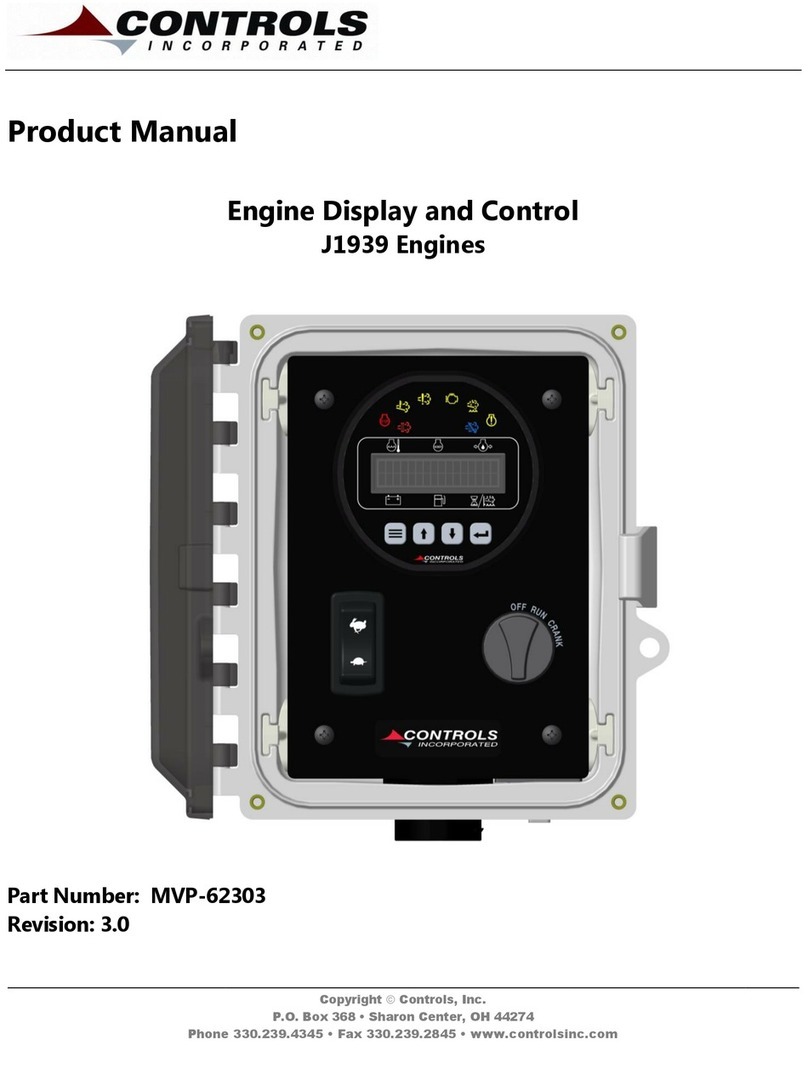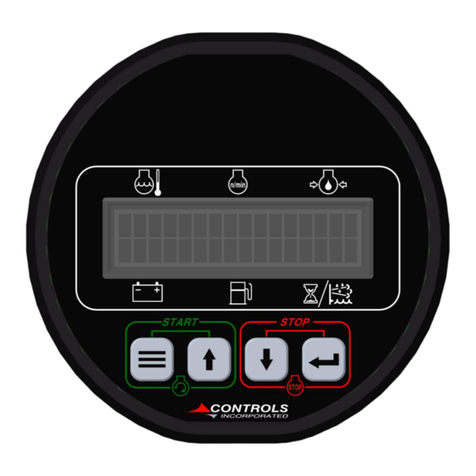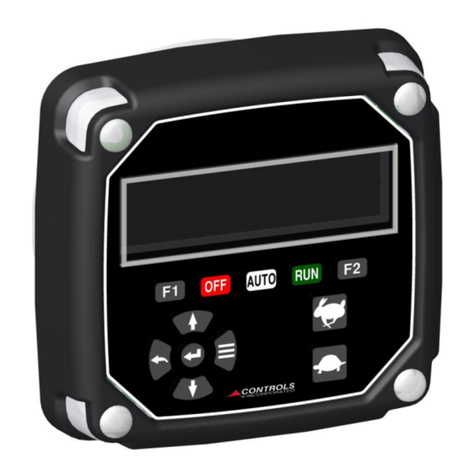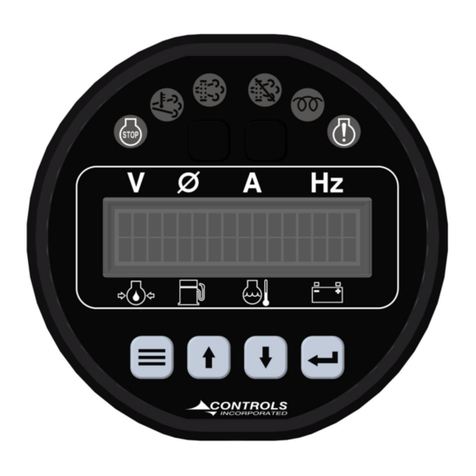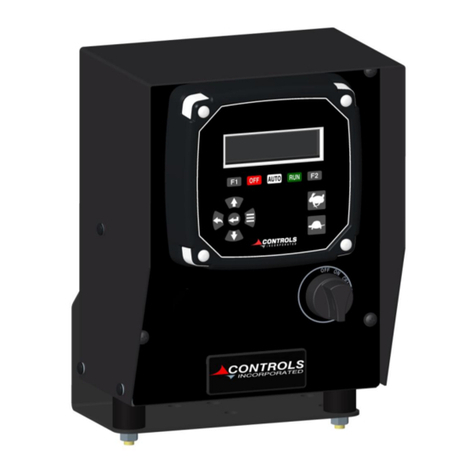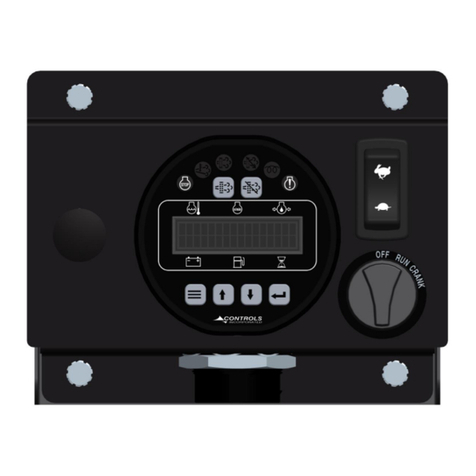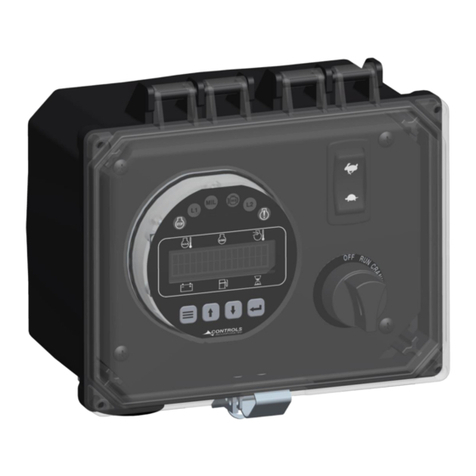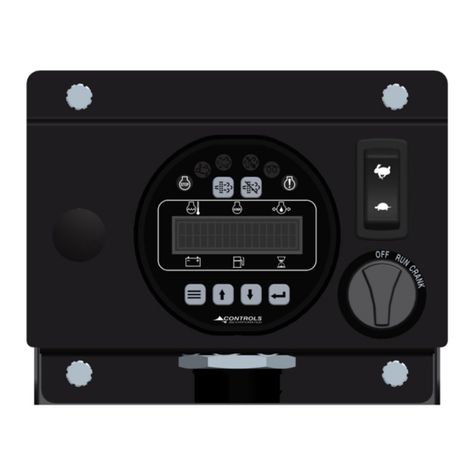5
INSTALLATION
MOUNTING LOCATION
To ensure a long life from your module, please review the following installation guidelines.
•HEAT: Be sure to take into account excessive heat areas when mounting your control panel.
Stay away from turbo chargers, exhaust manifolds, diesel particulate filters or any other location
that would put the control panel in the vicinity of excessive heat
•ENCLOSURE MOUNT: If your installation is better suited for a full control panel rather than a
module, contact Controls, Inc. for available options or assistance in designing an enclosure for
your application.
•CONVIENCE OF USE: Study the final assembly of the piece of equipment and how it will be
used. Take into account the operator when locating the module. Ease of access to the unit,
keys and display are all critical in allowing the operator to successfully and safely operate the
module. Extension harnesses are available from Controls, Inc. if the engine harness being used
does not allow for proper location selection.
•WEATHER AND WASHDOWN: The control panel is designed to be weather tight and can be
used in open outdoor conditions. The enclosure has a Gore vent, located on the rear of the
enclosure, which will allow for breathing between the interior of the control enclosure and the
outside environment. Be sure to not apply undue water pressure during wash down and do
not directly spray the Gore vent area.
•HARNESS ROUTING: The use of common sense with respect to harness routing and drip
loops can go a long way in the prevention of unintended water intrusion. Also take into
account the stresses put on the harnessing and the proximity to heat sources as well. For spark
ignited engines, be sure to keep the panel wiring at least 12 inches from the ignition wires.
